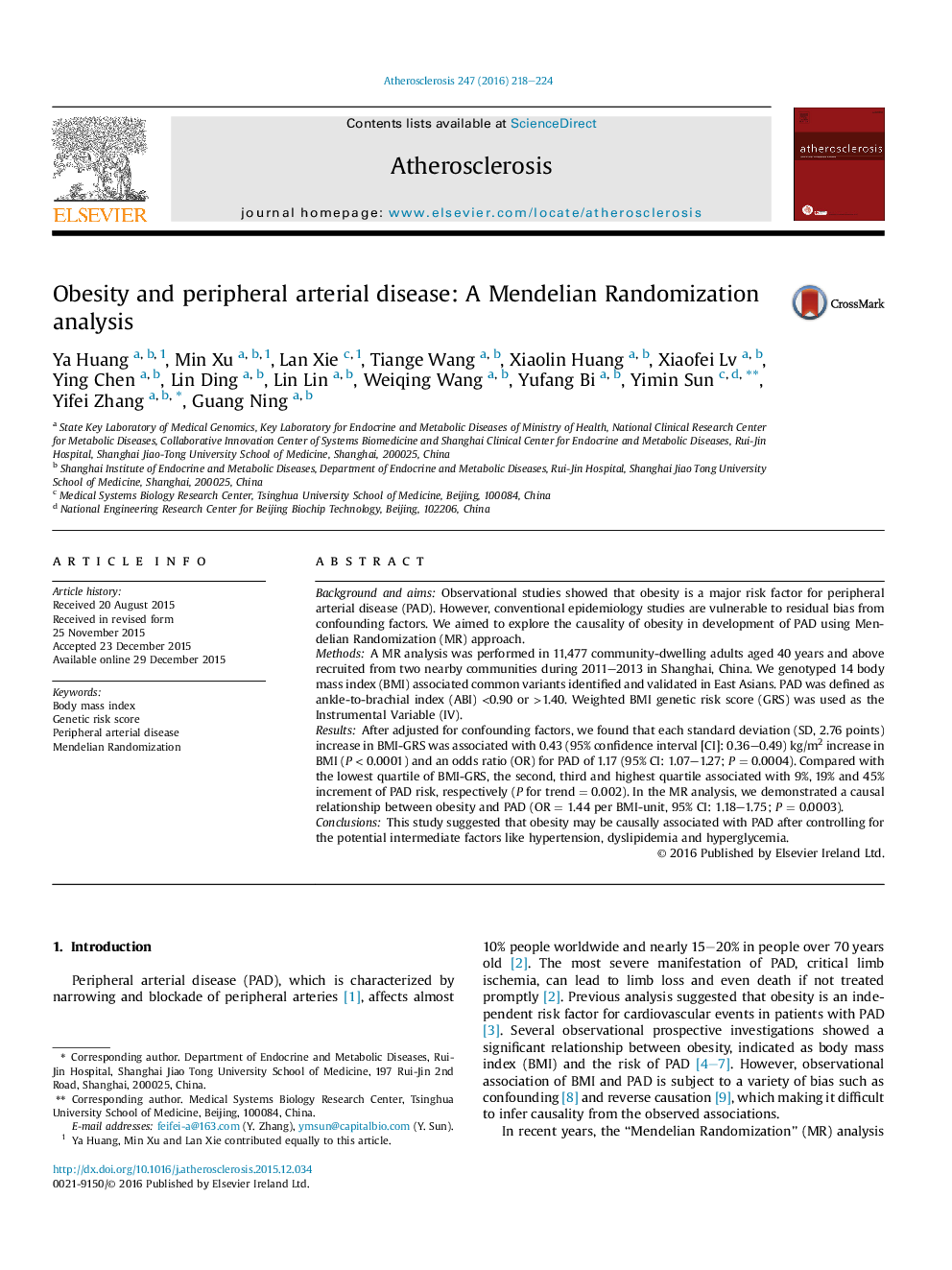| کد مقاله | کد نشریه | سال انتشار | مقاله انگلیسی | نسخه تمام متن |
|---|---|---|---|---|
| 5943386 | 1574718 | 2016 | 7 صفحه PDF | دانلود رایگان |
- The potential causal effect of obesity on PAD was explored by a Mendelian Randomization analysis.
- Weighted body mass index genetic risk score (BMI-GRS) was used as the instrumental variable (IV).
- A higher BMI-GRS was associated with higher risk of PAD.
- Obesity estimated by IV may be causally associated with risk of PAD in MR analysis.
Background and aimsObservational studies showed that obesity is a major risk factor for peripheral arterial disease (PAD). However, conventional epidemiology studies are vulnerable to residual bias from confounding factors. We aimed to explore the causality of obesity in development of PAD using Mendelian Randomization (MR) approach.MethodsA MR analysis was performed in 11,477 community-dwelling adults aged 40 years and above recruited from two nearby communities during 2011-2013 in Shanghai, China. We genotyped 14 body mass index (BMI) associated common variants identified and validated in East Asians. PAD was defined as ankle-to-brachial index (ABI) <0.90 or >1.40. Weighted BMI genetic risk score (GRS) was used as the Instrumental Variable (IV).ResultsAfter adjusted for confounding factors, we found that each standard deviation (SD, 2.76 points) increase in BMI-GRS was associated with 0.43 (95% confidence interval [CI]: 0.36-0.49) kg/m2 increase in BMI (P < 0.0001) and an odds ratio (OR) for PAD of 1.17 (95% CI: 1.07-1.27; P = 0.0004). Compared with the lowest quartile of BMI-GRS, the second, third and highest quartile associated with 9%, 19% and 45% increment of PAD risk, respectively (P for trend = 0.002). In the MR analysis, we demonstrated a causal relationship between obesity and PAD (OR = 1.44 per BMI-unit, 95% CI: 1.18-1.75; P = 0.0003).ConclusionsThis study suggested that obesity may be causally associated with PAD after controlling for the potential intermediate factors like hypertension, dyslipidemia and hyperglycemia.
Journal: Atherosclerosis - Volume 247, April 2016, Pages 218-224
